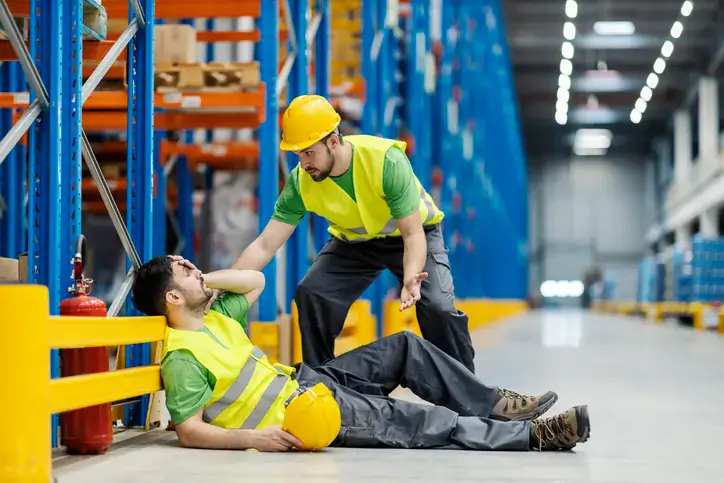
Workplace safety is the backbone of any successful operation, especially in high-risk industries where the margin for error is slim. A strong safety culture not only prevents injuries but also boosts productivity, morale, and employee retention. As noted by ProLift Rigging, organizations that consistently invest in training, equipment, and open communication tend to experience fewer disruptions and foster trust among team members. Ignoring safety standards, on the other hand, can result in serious financial and legal repercussions.
From identifying hazards to adopting modern safety tools, every step taken toward protecting workers is a step toward building a more resilient workforce. Recognizing that safety is a shared responsibility ensures that everyone—from leadership to frontline workers—plays an active role in maintaining a secure workplace atmosphere.
The Impact of Unsafe Work Environments
When safety is neglected, workers face a higher risk of injury, stress, and long-term health issues. A single accident can disrupt operations, lower morale, and result in lost wages for employees. Over time, this can erode trust between workers and management, leading to higher turnover and reduced team cohesion.
Negligent safety practices also come with financial consequences. Companies may face hefty fines, increased insurance premiums, and costs related to downtime or equipment damage. Regulatory bodies such as OSHA can impose penalties or halt operations if compliance is lacking, which affects reputation and revenue.
A poor safety record doesn’t just stay internal—it can influence public perception and make it harder to attract skilled labor. Businesses that prioritize safety often gain a competitive edge by showing they value their workforce and operate responsibly. In competitive industries, a clean safety record can also serve as a deciding factor in securing contracts.
Identifying Common Workplace Hazards
Worksites are full of potential dangers, both visible and hidden. Falls from ladders, contact with live electrical wires, and incidents involving heavy machinery are frequent causes of injury. These types of risks demand ongoing awareness and strict adherence to safety protocols. Even something as simple as an unattended spill or cluttered walkway can lead to serious consequences if ignored.
Exposure to chemicals, prolonged noise, and extreme heat or cold can also pose serious threats. In industries where such conditions are common, failure to control the work environment can lead to chronic health problems that may not be immediately obvious. This makes regular evaluations and monitoring essential to long-term employee well-being and compliance.
Behavior plays a major role in workplace safety. A tired employee rushing to meet a deadline, or someone unfamiliar with the correct procedure, can unintentionally put themselves and others in harm’s way. Leadership must emphasize not only rules, but also a mindset of caution and care.
Implementing Effective Safety Practices
Establishing routines that prioritize safety helps create a culture where caution becomes second nature. Regular site inspections and risk assessments serve as the first line of defense by identifying hazards before they cause harm. When protocols are clearly communicated and reinforced, workers are more likely to act in ways that prevent incidents. Management should also model the behavior they expect from their teams, setting a tone of accountability.
Training is essential, not just at the start of employment but throughout a worker's time on the job. Refreshers help keep safety procedures top of mind and adapt to any changes in equipment or regulations. In high-risk settings, even the placement of warning signs or ensuring the right protective gear is worn can make a major difference. A proactive training schedule ensures everyone is prepared for routine and unexpected situations.
Shared Responsibility for Safety
Creating a safe workplace isn’t the job of one person—it’s a shared commitment. Employers must provide the tools, training, and oversight, but workers also have a duty to speak up when they spot unsafe conditions. When both sides are engaged, safety becomes part of the daily rhythm rather than an afterthought. Peer-to-peer accountability also plays a powerful role in reinforcing safe habits.
Open communication strengthens this partnership. Teams that feel comfortable reporting concerns without fear of blame tend to spot issues earlier and respond more effectively. A culture that rewards attentiveness and accountability builds trust and reduces the likelihood of preventable mistakes. Leadership should encourage feedback and demonstrate that every voice matters in keeping the work environment secure.
Tools and Technology That Improve Safety
Modern technology is transforming how safety is managed on the worksite. Wearable devices can monitor fatigue or detect harmful gas levels, alerting workers before a situation escalates. These tools act as an extra layer of protection in environments where conditions can change rapidly. Smart helmets and sensors are now common in high-risk industries like mining and construction.
Digital checklists and mobile apps allow supervisors to log inspections and track compliance in real time. Instead of relying on memory or paper records, teams can respond to issues quickly and with greater accuracy. As technology continues to progress, the integration of artificial intelligence and predictive analytics may further enhance workplace safety efforts.


